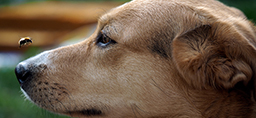
For centuries, hammocks have been used for swinging, sleeping, or just plain relaxing.
While they may seem fun-filled and relatively harmless, hammocks do have their down sides, as evidenced by the death of two sisters in Ohio earlier this summer. The hammock that held the girls was attached to a brick pillar, which collapsed on top of them.
Health officials and safety experts say hammocks are not usually a significant source of traumatic injuries, but it’s important to know how to properly use and secure them.
“Many injuries happen because the hammock was not secured properly,” said Meaghan Crawley, MSN, RN, who is the trauma injury prevention coordinator for Spectrum Health Butterworth Hospital.
“If it is not secured properly, the risk of a hammock falling increases. Also, take the time to ensure nothing can fall on you while you are in the hammock,” she added. “That’s another way to avoid a serious injury.”
Crawley’s tips for set-up safety
- Read the manufacturer’s instructions in their entirety.
- Inspect the equipment for tears, loose strings or breaks before you use it.
- Hang no more than 2 feet off the ground.
- Don’t hang a hammock over a hill, water, etc. as this increases risk of injury risk if a fall occurs.
- Make sure the hammock is not taut. A taut hammock is more likely to tip.
- Use the provided tools and devices to properly secure the hammock; don’t improvise.
- If hanging the hammock on a tree, do not hang it below loose branches and make sure the tree is alive. Dead trees can snap easily.
- If hanging the hammock on posts, the post must be at least 6 inches in diameter and one-third of the post’s length should be anchored into the ground.
Dos and Don’ts
- DON’T place an infant on a hammock. This poses a suffocation risk and does not fall within the safe sleeping guidelines.
- DO sit down slowly onto the hammock and gradually re-distribute your weight as you settle into it.
- DO monitor children at all times. Hammocks pose a strangulation and suffocation risk to young children, plus most injuries are associated with falling out of a hammock.
- DON’T jump or bounce on the hammock.
- DON’T step into a hammock.
- DON’T allow more than one person at a time in the hammock.
- DO follow the manufacturer’s guidelines on capacity and weight limits.
 /a>
/a>
 /a>
/a>
 /a>
/a>